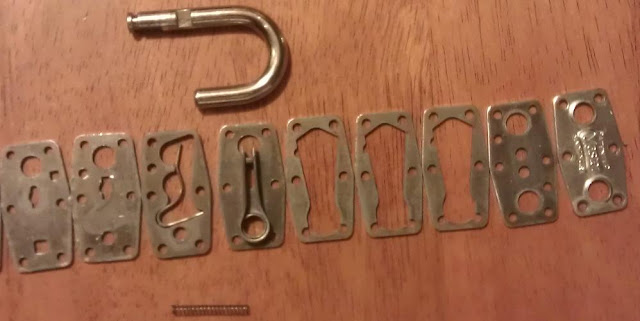 |
| Overly Complicated for Profit |
First off the cables have about a 80% failure rate within 3-4 months, from my experience.
Second the price they want for a replacement cable is ridiculous, on average around the web about $55 USD.
They use a RJ-50 aka the RJ-45 10 pin adapter for the connection to the scanner. Why an RJ-50? They must be using those 10 pins for something really cool right? Surely they wouldn't do this just to charge more to their customers and make it difficult to fix yourself...
When you take the plug end out of the scanner to look at the pin out you see this:
1- Black
2- Red
3- Black
4- White
5- White
6- Black
7- Green
9- White
10-White
When you get down to it and manage to get the actual plug end uncovered from the "protective" sleeve that they've glued and molded onto the plug, which is no small task might I add, you see that most of it is just blank pieces of plastic taking up space.
Pins 4,8,9, and 10 are complete bullshit, just pieces of plastic, there's not even copper wire in them, 100% plastic. Useless, unneeded, plastic that serves no purpose.
 | |
| White Lies |
Pins 1 and 6 are looped together with one piece of wire in a U shape. And wouldn't you know, it doesn't work properly without 1 and 6 looped, what an amazing coincidence that you COULD make this thing with just a standard RJ45, or a RJ11 and make it easily serviceable, replaceable, and able to be done in house.
 |
| The "Magic" Wire |
 |
| Awesome Splice Job |
Actual pinout
1- Black - Looped to 6
2- Red - USB
3- Black - USB
4- Useless
5- White - USB
6- Black - Looped to 1
7- Green - USB
8- Useless
9- Useless
10- Useless
Ordered the equipment online, crimper ~$40, ends .99 / each. If you have a small fleet of these things to take care of, like I do, I suggest you make the investment also and tell WASP to get bent.

































